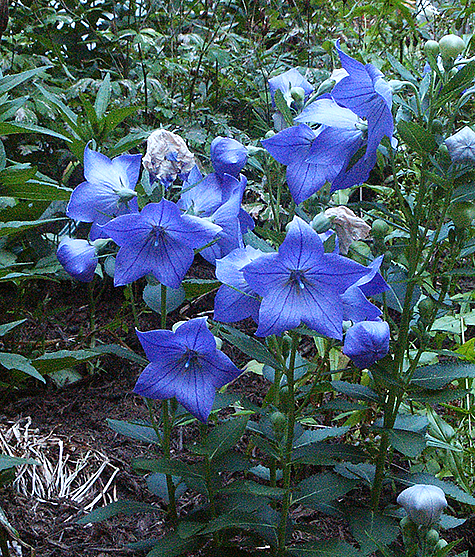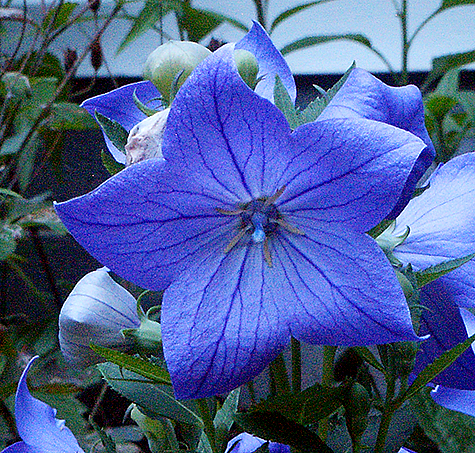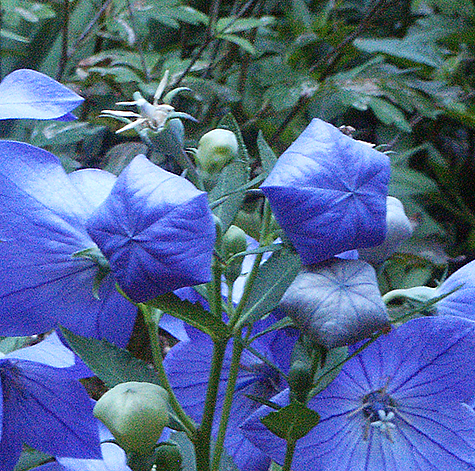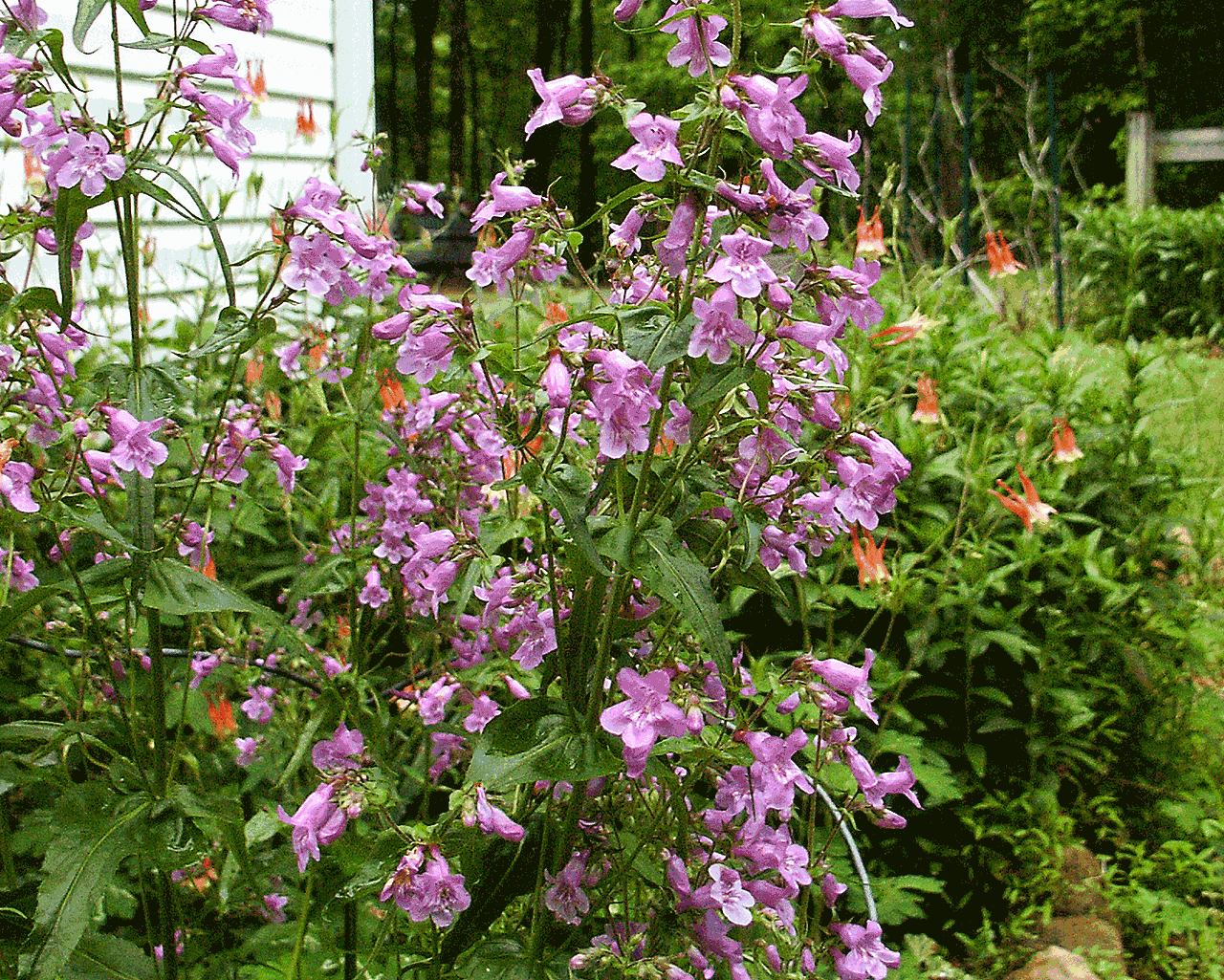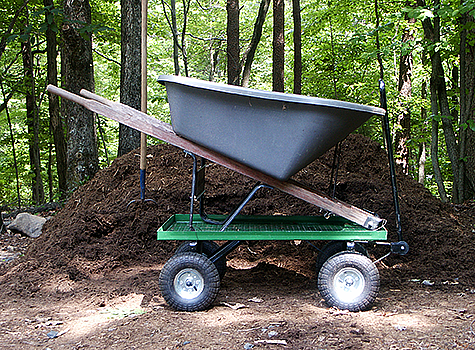A friend offered to send me some irises to include in my gardens. However, these were not the bearded irises that I currently grow. Of the varieties sent to me, two were Rocky Mountain Iris (Iris missouriensis) and Yellow Flag (Iris pseudacorus) which require a very wet area to grow. Unfortunately, I have no streams or wet areas on my property to grow the irises sent to me. Therefore, I decided I would create a bog that I could keep wet so I would be able to grow these irises. Along with the irises were some spider lily bulbs that also need to grow in a wet area. Spider lilies are actually not lilies but a member of the Amaryllidaceae family.
To create the bog I dug a trench at a depth of around 30 cm (1 ft) since the spider lilies need to be planted at a depth of 13 cm (5 in) below the soil level. Once I had the trench created, I lined it with polyethylene plastic sheeting that will help to hold the water in place and filled it with new soil since my soil is heavy clay.
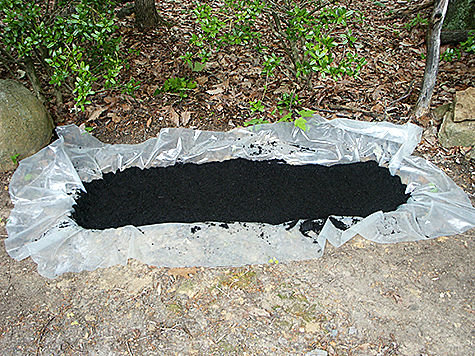
The bog filled with soil
Once I had the bed filled, I planted the irises and the spider lilies. These irises are planted differently from breaded irises as they have a different root structure. Unlike breaded irises, the entire root structure up to the crown is planted below the surface.
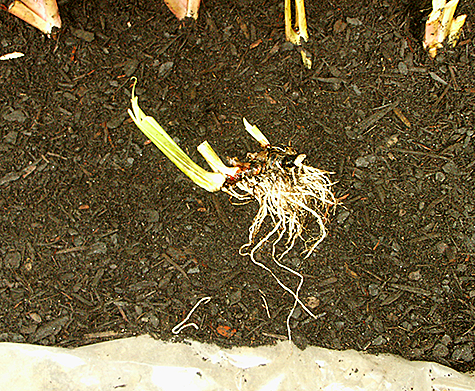
Iris root structure
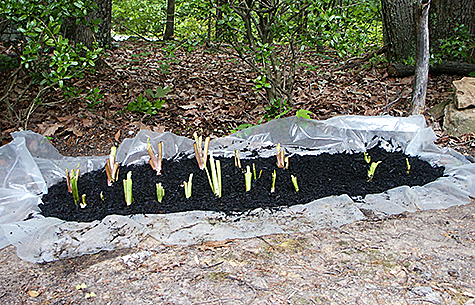
The bed planted but without border
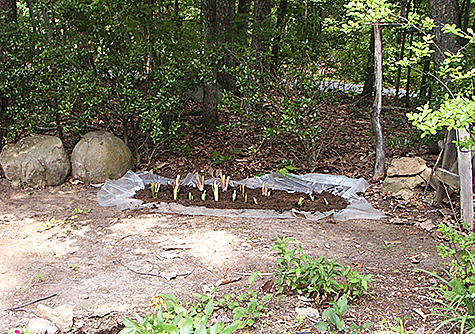
A far shot of the bog, it is located at the side garden.
Once I had the bed planted, the next step was to build the border around the bed. As my readers will know, I like to build my borders with the natural stone from the property. I decided I wanted a low border for this bed and used flat stones that would give a low profile border around the bed. I left the plastic sheeting around the edge of the bed and placed the stones on top of the plastic sheeting to help with water flow into my little bog. I trimmed the plastic sheeting as needed and then burred it so it would not be seen. After I finished building the bog, I decided to finished the border around the little side garden. There are a few other things to do in the little side garden and I will be sharing photos of the completed side garden later. The last photograph below is a far shot that shows part of the side garden as well as the new iris bog.
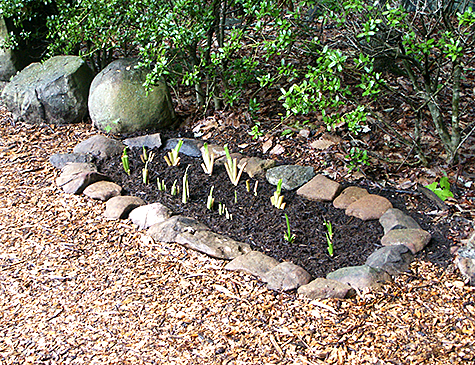
The finished bog with border in place
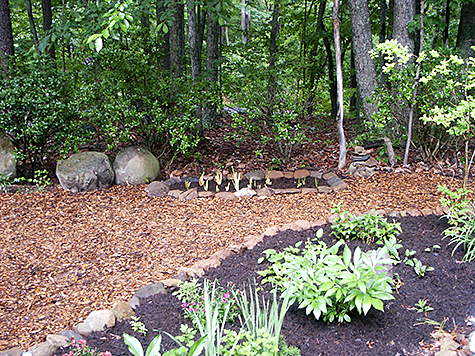
A far shot of the iris bog with part of side garden in foreground
With a bit of luck, my new iris bog will be a success and I will be rewarded with some different iris blooms from the breaded irises that I now grow. I am also hoping that the spider lilies will survive as I have wanted to add these to my gardens. If my iris bog is a failure, then I will just convert it later to something different.
